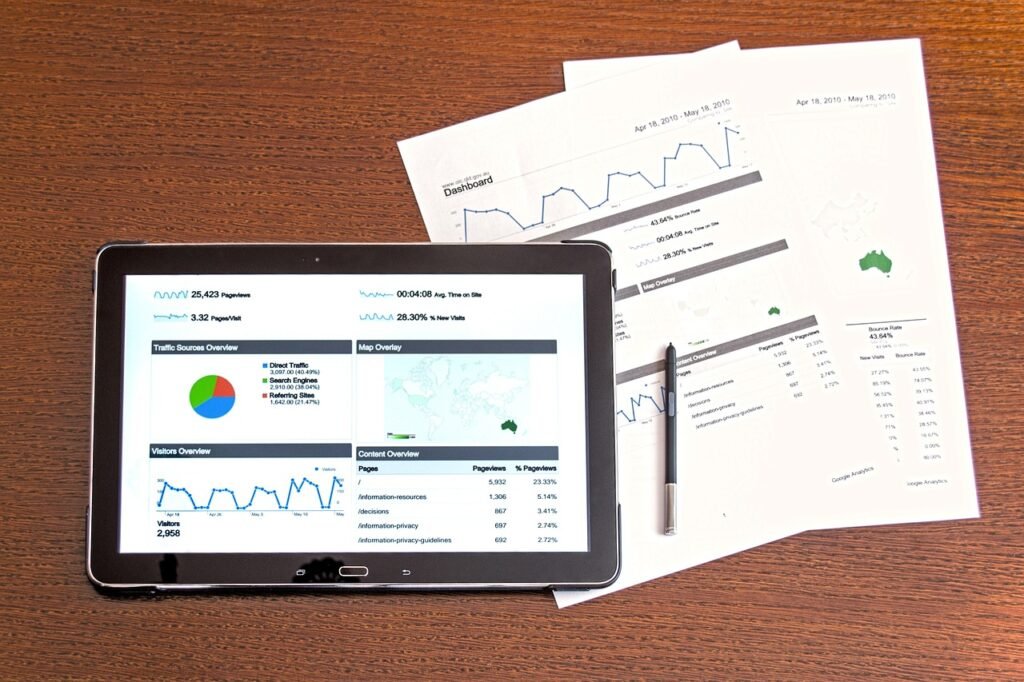Table of Contents
Big Data and Business Intelligence Integration

Introduction
In today’s data-driven world, businesses are facing the challenge of managing and analyzing large volumes and diverse sources of data. Traditional business intelligence (BI) systems, while effective in providing insights from structured data, struggle to handle the variety and scale of big data. To unlock the full potential of data-driven insights, organizations are increasingly integrating big data technologies with their BI systems. This integration allows businesses to harness the power of both structured and unstructured data to improve decision-making processes and gain a competitive edge.
Strategies for Integrating Big Data Technologies with Traditional BI Systems
There are several strategies organizations can employ to integrate big data technologies with traditional BI systems:
- Data Lakes and Warehouses: Data lakes and data warehouses are used to store and manage both structured and unstructured data. By integrating big data into these repositories, businesses gain the ability to leverage both structured and unstructured data for analytics and reporting purposes.
- Hybrid Architectures: Hybrid architectures combine on-premises infrastructure with cloud-based solutions. This approach offers the flexibility to handle varying data volumes and allows businesses to scale their infrastructure as needed.
- ETL Processes: Extract, Transform, Load (ETL) processes are crucial for integrating data from various sources into a unified BI system. ETL processes ensure data quality, consistency, and compatibility across different data types, enabling accurate analysis and reporting.
- APIs and Connectors: Application Programming Interfaces (APIs) and connectors facilitate seamless data integration between big data platforms and BI tools. This enables data to flow smoothly between systems, allowing businesses to combine data from different sources for a comprehensive view of their operations.
Real-World Examples Demonstrating the Value of Big Data Analytics in BI Applications

Integrating big data analytics with BI systems offers numerous benefits across various industries. Here are some real-world examples:
- Retail Industry: Retail companies use big data analytics to gain insights into customer behavior, enhance inventory management, optimize pricing strategies, and personalize marketing campaigns.
- Healthcare Sector: Healthcare providers leverage big data analytics to improve patient care, predict disease outbreaks, optimize resource allocation, and enhance operational efficiency.
- Financial Services: Financial institutions utilize big data analytics for fraud detection, risk assessment, personalized financial services, and regulatory compliance.
Challenges and Solutions in Managing and Analyzing Large Volumes of Disparate Data
Integrating big data and traditional BI systems presents several challenges:
- Data Quality and Consistency: Disparate data sources often have differing data quality and consistency standards. Ensuring data quality and consistency during the integration process is crucial. Data cleansing, standardization, and validation processes can help address these challenges.
- Scalability: Analyzing large volumes of data requires a scalable infrastructure. Distributed computing frameworks like Hadoop, Spark, and cloud-native solutions provide the scalability needed to process and analyze big data effectively.
- Data Security and Privacy: When integrating big data with BI systems, organizations must implement robust security measures to protect sensitive data. Encryption, access controls, and data anonymization techniques help safeguard data privacy and comply with regulatory requirements.
- Performance Optimization: The performance of BI systems can be affected when dealing with large datasets. Techniques such as data indexing, query optimization, and in-memory processing can improve system performance and reduce response times.
Best Practices for Scalable and Efficient Integration of Big Data and BI
To ensure a successful integration of big data and BI, organizations should follow these best practices:
- Data Governance: Establish a robust data governance framework to ensure data integrity, quality, and compliance across the organization.
- Metadata Management: Implement effective metadata management practices to enhance data discoverability, understandability, and utilization.
- Automation: Automate data integration and processing tasks to improve efficiency, reduce manual errors, and enable faster decision-making processes.
- Cross-Functional Collaboration: Foster collaboration between IT and business teams to align data strategies with organizational goals and make informed decisions using integrated data insights.
Future Trends in Big Data and BI Integration
The integration of big data and BI continues to evolve with the emergence of new technologies. Some future trends include:
- Artificial Intelligence and Machine Learning: Integration with AI and ML enables businesses to analyze and derive insights from big data more efficiently and accurately. AI-powered algorithms can automate data processing, identify patterns and anomalies, and make predictions.
- Edge Computing: Edge computing brings data processing closer to the data source, enabling real-time analysis and reducing latency. This trend is particularly relevant for industries with time-sensitive operations, such as IoT, manufacturing, and autonomous vehicles.
- Data Virtualization: Data virtualization provides a virtual layer that unifies data from various sources, eliminating the need for physical data movement. This approach simplifies data integration and allows for real-time access to integrated data sets.
- Cloud-Native Solutions: Cloud-native environments offer scalable and cost-effective infrastructure for big data analytics. Hosting big data platforms such as Hadoop, Spark, and data warehouses on the cloud allows businesses to rapidly scale their computing resources based on demand.
Big Data VS Business Intelligence: all you need to know about these two!
Watch this on YouTube: https://youtu.be/DinhsGbrydY
It’s hard to compare them but let’s try to explain what these two terms mean and which tools they involve – big data vs business intelligence.
About this video:
Business intelligence, or BI, is the process by which businesses analyze current and historical data using methods and technology to improve strategic decision-making and gain a competitive advantage.Big data refers to large, complex structured, and unstructured data sets that are generated and transferred quickly from a range of sources. Because these data sets are so large, typical data processing software can’t handle them.
TIME CODES:
00:00 Big Data or Business Intelligence
00:32 What is Business Intelligence?
00:58 Tools for BI
01:45 What is Big Data?
02:02 Tools for Big Data
03:27 Big data vs business intelligence
06:07 Contact Jelvix
Conclusion
Integrating big data technologies with traditional BI systems is crucial for organizations seeking to derive meaningful insights from their data. By adopting effective strategies, addressing challenges, and following best practices, businesses can successfully integrate big data analytics into their existing BI frameworks. This integration unlocks the full potential of data-driven insights, enabling organizations to make informed decisions, improve operational efficiency, and gain a competitive edge in the marketplace.
Leveraging Business Intelligence effectively can transform data into actionable insights, driving strategic decisions and business growth. Stay tuned to Feed Flow for more in-depth analyses and insights on BI and beyond.



